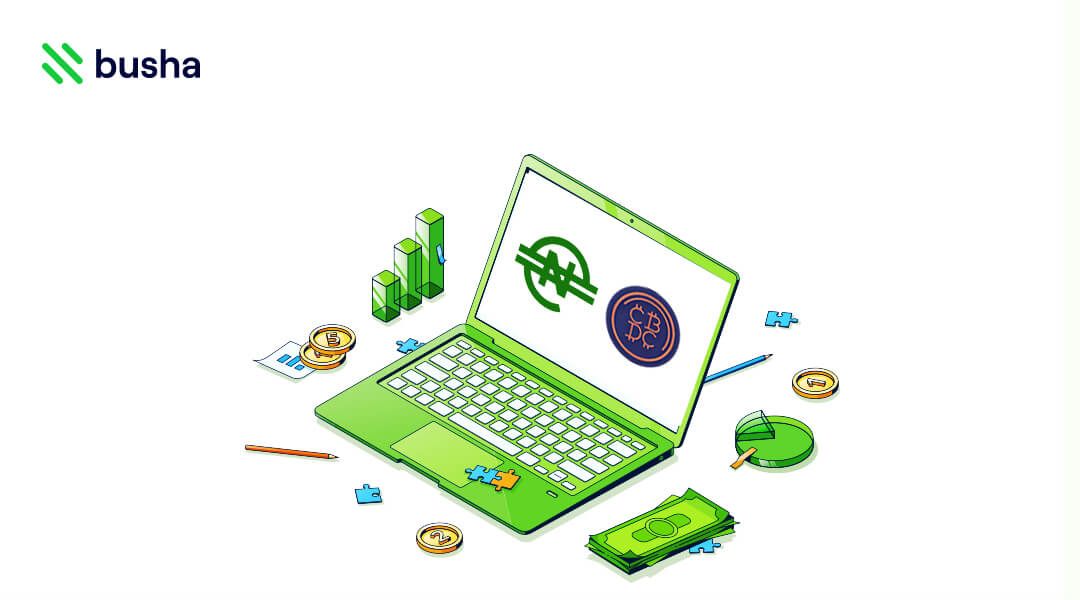
The Rise of eNaira and CBDCs
At the launch of e-Naira in October 2021, the Central Bank of Nigeria governor, Godwin Emefiele, said 500 million eNaira ($1.21 million) had already been minted.
At the launch of e-Naira in October 2021, the Central Bank of Nigeria governor, Godwin Emefiele, said 500 million eNaira ($1.21 million) had already been minted.
What is eNaira?
On the 25th of October 2021, The Nigerian Government launched the eNaira. A digital currency equivalent to the same value as the government-issued paper naira currency. The eNaira is simply an electronic version of the paper currency set to function as a safe and efficient means of both local and foreign payments.
Why eNaira?
According to the CBN, one of the major reasons for introducing the electronic currency is to boost financial inclusion nationwide, especially for those citizens who live in remote areas and diaspora who have little access to physical bank branches or cash systems. The unbanked population is going to be heavily catered to using this new initiative.
Other reasons for the development of the eNaira include;
- Easily distribute/send direct payments to citizens eligible for specific welfare programs within the community. For instance, in the case of IDPs, flood victims, pandemics, and other casualties
- The eNaira would serve as a financial instrument to boost transparency and scrutinize financial transactions while reducing black marketing trading of the paper naira. This particular objective takes a cue from cryptocurrencies as the eNaira is built on blockchain’s open ledger technology making it immune to duplicity and counterfeiting.
- According to the government, the use and adoption of eNaira would lead to a drastic reduction in the high cost of printing physical notes.
- Finally, the CBN intends to use this new currency format to reduce state budgets leakages and illicit spending by again leveraging blockchain technology using in-built traceability.
How does the eNaira work?
In its Design Paper for the Use of the eNaira, the Central Bank of Nigeria stated that in order to promote inclusiveness, widespread adoption, usage, and efficiency, the eNaira would be accessible to all Nigerians with or without internet-enabled phones. The digital currency goes further to operate at four different levels
- Consumer transactions
- Merchant/wholesale transactions
- Financial transactions
- MDA transactions
How successful has the eNaira been?
As of March 2022, there have been 87 nations globally that have shown interest in issuing a CBDCC (Central Bank Digital Currency) of which 9 countries including Nigeria and The Bahamas have fully launched theirs.
Many Nigerians are skeptical as to how the new digital currency operates leading to a poor adoption rate within its few months of launch. The eNaira speed wallet which is the official software application used to set up an account currently requires citizens to link their bank accounts in order to access the token. This has so far posed a limit to the unbanked and individuals living in rural areas.
Furthermore, the eNaira does not operate as cryptocurrencies do. Before the launch of CBDCs, many individuals opined that they would compete or work like their cryptocurrencies counterparts which gained earlier momentum. This is not the case as cryptocurrencies are decentralized assets free from government regulations and managed through community involvement.
Challenges of the eNaira
- Government control and regulation mean the digital currency is not immune to inflation, devaluation, or gross misuse compared to cryptocurrencies. This means that whatever affects the value of the physical notes, affects the digital version.
- Poor adoption policy: There is currently a huge marginal gap between individuals with bank accounts, internet-enabled devices, and access to physical bank facilities which defeats the goal of widespread inclusion.
- The blockchain technology built for transacting across the network is relatively slow and takes almost as long as everyday transactions from banking mobile apps.
- Spending limits also apply while using the eNaira. Depending on the tier level of the account owner and needs, the CBN monitors and dictates how much can be sent or received for both local and global remittance/payments.
With the emergence of blockchain technology and wider adoption by many more countries, CBDCs are sure to have an advantage and even many more implications for their usage.

